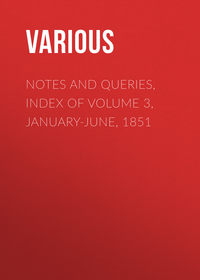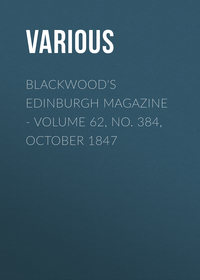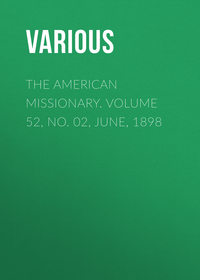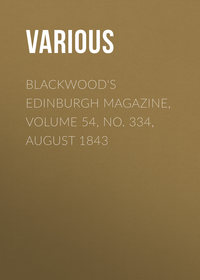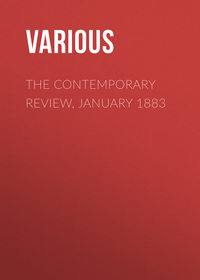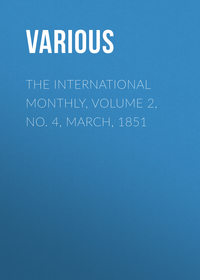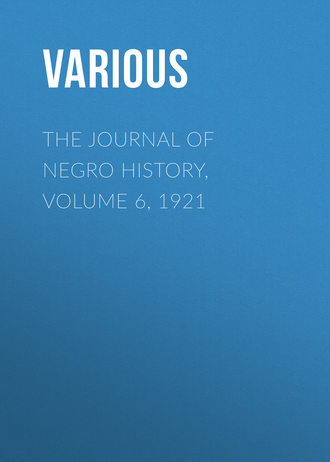 полная версия
полная версияThe Journal of Negro History, Volume 6, 1921
275
Report of Senatorial Committee, p. 97.
276
Sanborn, Life and Letters of John Brown, pp. 457-8.
277
Sanborn, Life and Letters of John Brown, pp. 536-538, 547.
278
Hinton, John Brown and His Men, pp. 261-263.
279
José Antonio Saco, Historia de la Esclavitud … (Barcelona, 1879), IV, 57 ff.
280
Saco, op. cit., IV, 74, 75, 178; Gonzalo Fernandez de Oviedo, Historia General … tom. 3, lib. 29, cap. 3.
281
Dec. 2, lib. 10, cap. 4; Bernal Diaz del Castillo, Conquista de Nueva-Espana, cap. 124.
282
Herrera, dec. 5, lib. 5, cap. 7-9.
283
Dec. 3, lib. 10, cap. 5.
284
Herrera, op. cit., dec. 5, lib. 10, cap. 1, 2, y 3.
285
Saco, op. cit. IV, 166.
286
Ibid., IV, 170.
287
Pedro de Casteñeda, "Account of the Expedition to Cibola which took place in the year 1540 …," translated in Spanish Explorers in the Southern United States (J. F. Jameson, ed.), pp. 289-290.
288
Spanish Settlements in the United States, 1513-1561, pp. 278-280.
289
Quoted in Lowery, op. cit., pp. 281-282.
290
Census of New York before 1790:

Morgan, Slavery in New York, page 38.
291
New York Emancipation Law—African Repository, Vol. 31, page 155.
292
Half a Man, M. W. Ovington, page 69.
293
American Convention of Abolition Societies, 1797, p. 39.
294
Ibid., p. 39.
295
Ibid., p. 30.
296
Ibid., 1803, p. 7.
297
American Convention of Abolition Societies, 1805, p. 38.
298
Ibid., 1812, p. 7.
299
American Convention of Abolition Societies, 1812, p. 14.
300
Inspectors of the New York African Free Schools reported to The Commercial Advertiser, May 12, 1824, that "we never beheld a white school of the same age in which without exception there was more order, neatness of dress, and cleanliness of person."
301
Ibid.
302
Journal of Negro History, Vol. III, p. 354.
303
Woodson, Education of the Negro Prior to 1861, p. 286.
304
Journal of Negro History, Vol. III.
305
Hurd's Law of Freedom-Bondage, p. 81.
306
African Repository, September, 1846, p. 278.
307
Ibid., 1851, p. 263.
308
Narrative of Sojourner Truth, p. 99.
309
Ibid., p. 99.
310
Martin Delaney, Condition of Colored People, p. 139.
311
Ibid., p. 102.
312
Ibid., p. 106.
313
Austin Steward, Condition of Colored People, p. 102.
314
Ibid., p. 102.
315
Austin Steward, Condition of Colored People, p. 102.
316
Ibid., p. 132.
317
Seventh Census of the United States.
318
J. F. Clarke, Present Condition of People of Color, p. 14.
319
Ibid.
320
Afro-American Press, p. 27.
321
Minutes of the Proceedings of a Convention of Delegates from the Abolition Societies, 1795, pp. 26-31.
322
Minutes of the Proceedings of a Convention of Delegates from the Abolition Societies, 1796, pp. 23-25.
323
Minutes of the Proceedings of a Convention of Delegates from the Abolition Societies, 1796, p. 28.
324
Minutes of the Proceedings of a Convention of Delegates from the Abolition Societies, 1797, pp. 22-25.
325
Minutes of the Proceedings of a Convention of Delegates from the Abolition Societies, 1798, pp. 15-20.
326
Minutes of the Proceedings of a Convention of Delegates from the Abolition Societies, 1800, pp. 20-23.
327
Minutes of the Proceedings of a Convention of Delegates from the Abolition Societies, 1801, pp. 42-46.
328
Minutes of the Proceedings of a Convention of Delegates from the Abolition Societies, 1803, pp. 29-34.
329
Minutes of the Proceedings of a Convention of Delegates from the Abolition Societies, 1804, pp. 35-39.
330
Minutes of Proceedings of Tenth American Convention for the Abolition of Slavery, 1805, pp. 26-35.
331
Minutes of the Proceedings of the Twelfth American Convention for promoting the Abolition of Slavery and improving the condition of the African Race Assembled at Philadelphia, 1809, pp. 26-31.
332
Minutes of the Proceedings of a Convention of Delegates from the Abolition Societies, 1812, pp. 25-28.
333
Minutes of the Proceedings of a Convention of Delegates from the Abolition Societies, 1827, pp. 20-22.
334
Minutes of the Proceedings of a Convention of Delegates from the Abolition Societies, 1827, pp. 22-25.
335
Minutes of the Proceedings of a Convention of Delegates from the Abolition Societies, 1828, pp. 28-30.
336
Minutes of the Proceedings of a Convention of Delegates from the Abolition Societies, 1829, pp. 19-21.
337
Quoted by Leo Frobenius, Voice of Africa, Vol. 1, p. 1.
338
H. Ling Roth, Great Benin, p. 217.
339
Jour. Anthrop. Inst., February, 1898, p. 371.
340
F. L. Lugard, A Tropical Dependency, p. 154.
341
Lugard, A Tropical Dependency, p. 154.
342
Translated into English by Rudolf Blind. Published by Hutchinson and Company, London, 1913.
343
Old Dutch and Portuguese manuscripts have been collected and studied by Ling Roth and the findings appear in his Great Benin quoted in this paper.
344
Ling Roth, Great Benin, p. 157.
345
Dr. Olfert Dapper, "Nauwkeurige. Beschrijvenge der Afrikansche Geweslen." (As listed and quoted by Ling Roth, in Great Benin.)
346
Ling Roth, Great Benin, p. 2.
347
The Benin Massacre, p. 81.
348
Quoted by Roth in Great Benin, p. 161.
349
Ibid., p. 162.
350
Ibid., p. 163.
351
Leo Frobenius, Voice of Africa, Vol. 1, pp. 21-25.
352
Leo Frobenius, Voice of Africa, Vol. 1, pp. 21-25.
353
Le Plateau Central Nigerien, Paris, 1907.
354
Frobenius, Voice of Africa, Vol. 1, p. 25.
355
Ling Roth, Great Benin, p. 193.
356
Ling Roth, Great Benin, p. 196.
357
Ling Roth, Great Benin, p. 205.
358
Ibid., p. 209.
359
Ling Roth, Great Benin, p. 209.
360
Frobenius, Voice of Africa, Vol. 1, p. 297.
361
Ibid.
362
Ibid., p. 302.
363
Frobenius, The Voice of Africa, Vol. 1, p. 305.
364
Frobenius, The Voice of Africa, p. 305.
365
Ibid., p. 105.
366
E. A. W. Budge, The Egyptian Sudan, Vol. 1, p. 526.
367
Fawckner, Travels on the Coast of Benin, London, 1837, p. 32.
368
A. B. Ellis, A History of the Gold Coast, p. 9.
369
Bowdich, Mission to Coomassee, p. 218. Quoted by Ellis.
370
Frobenius, The Voice of Africa.
371
It was such reports by the natives and the nature of the objects which they claimed to have found at this place that led Frobenius to excavate here. See pages 306-307 of his Voice of Africa, Vol. 1.
372
Frobenius, The Voice of Africa, p. 309.
373
Ibid., p. 313.
374
Frobenius, The Voice of Africa, p. 313.
375
Frobenius, The Voice of Africa, p. 313.
376
Ibid., p. 313.
377
Frobenius, The Voice of Africa, p. 313.
378
Ling Roth, Great Benin, p. 217.
379
Frobenius, Voice of Africa, p. 310.
380
Ling Roth, Great Benin, p. 31.
381
Ibid., p. 33.
382
Ling Roth, Great Benin, p. 225.
383
Ibid., p. 223.
384
Ling Roth, Great Benin, p. 223.
385
See an article by Dalton and Read in the Journal Anthrop. Inst., February, 1898, p. 372; also Ling Roth, Great Benin, p. 216.
386
Frobenius, The Voice of Africa, Vol. 1, p. 310.
387
"Works of art from Benin City," Jour. Anthrop. Inst., 1898, p. 321.
388
Ibid.
389
Ling Roth, Great Benin, p. 226.
390
Jour. Anthrop. Inst., 1898, p. 372.
391
Ibid., p. 272.
392
Mission to Ashanti, pp. 311-312.
393
Haussaland, p. 118.
394
Quoted by Ling Roth, in Great Benin, p. 232.
395
Ibid., p. 232.
396
Ibid., p. 219.
397
Lugard, A Tropical Dependency.
398
The facts concerning South Africa herein given are obtained from select constitutional documents in the appendix of The Bantu, by S. M. Molema. This book was published by W. Green and Son, Ltd., Edinburgh, 1920.
399
Molema, The Bantu, p. 220.
400
Ibid., p. 237.
401
Molema, The Bantu, p. 241.
402
Molema, The Bantu (appendix), p. 378.
403
Ibid.
404
Ibid., p. 378.
405
Molema, The Bantu, p. 368.
406
Molema, The Bantu (appendix), p. 384.
407
Molema, The Bantu, pp. 245-246.
408
Molema, The Bantu, pp. 264-266.
409
American Convention, Abolition Societies, Minutes, 1821-1829, pp. 42-48.
410
Minutes of the Proceedings of the Fourth American Convention of Delegates from the Abolition Societies, 1797, pp. 37-43.
411
American Convention Abolition Societies, Minutes, 1821, pp. 50-55.
412
American Convention Abolition Societies, Minutes, 1828, pp. 21-24.
413
American Convention Abolition Societies, Minutes, 1828, pp. 25-27.
414
American Convention Abolition Societies, Minutes, 1829, pp. 16-18.
415
American Convention Abolition Societies, Minutes, 1795-1804, pp. 24-29.
416
Minutes of Proceedings of a Convention of Delegates, from the Abolition Societies, 1794, pp. 26-27.
417
Minutes of Proceedings, Convention of Abolition Societies, Philadelphia, 1821, pp. 41-42.
418
American Convention Abolition Societies, Minutes, 1821, pp. 46-48.
419
American Convention Abolition Societies, Minutes, 1827, pp. 29-30.
420
Minutes of Proceedings, Convention of Abolition Societies, Baltimore, 1827, pp. 30-31.
421
American Convention Abolition Societies, Minutes, 1828, pp. 33-35.
422
American Convention Abolition Societies, Minutes, 1829, pp. 21-24.
423
"The holy fathers, monks and friars, had in their confessions and specially in their extreme and deadly sickness, convinced the laity how dangerous a practice it was, for one Christian man to hold another in bondage; so that temporal men by little and little, by reason of that terror in their consciences, were glad to manumit all their villeins."—Sir T. Smith His. Common, vide 2. Blackstone, p. 96.
424
Two thousand slaves are said to be now offered to the Colonization Society for transportation.
425
The slave population in 1810 was 1,191,364; in 1820, 1,531,436. Increasing in the same ratio, in 1830 it will be 1,948,587.
426
The increase in ten years is about twenty-eight per centum, but as the increase of the latter portion of the period is much greater than that of the former portion, it will be evident that our estimate for a single year is correct.
427
In 1828 it was $24,789,463. See Treasury Report for 1829.
428
American Convention Abolition Societies, Minutes, 1821-1829, pp. 25-35.
429
Minutes of Proceedings of a Convention of Delegates from the Abolition Societies, 1794, pp. 22-25.
430
American Convention Abolition Societies, Minutes, 1801, pp. 37-41.
431
American Convention Abolition Societies, Minutes, 1821, pp. 57-58.
432
American Convention Abolition Societies, Minutes, 1825, pp. 31-32.
433
American Convention Abolition Societies, Minutes, 1825, pp. 33-35.
434
American Convention Abolition Societies, Minutes, 1827, p. 19.
435
American Convention Abolition Societies, Minutes, 1828, pp. 17-20.
436
American Convention Abolition Societies, Minutes, 1829, pp. 37-40.
437
This dissertation was presented by Henderson H. Donald to the Faculty of the Graduate School of Yale University in candidacy for the degree of Master of Arts, May, 1920. Since then it has been considerably revised and augmented.
In the preparation of this work the following books were used: James Bryce, The American Commonwealth, Volume II; F. S. Chapin, Introduction to the Study of Human Evolution; H. P. Fairchild, Immigration; H. E. Gregory, A. G. Keller, and A. L. Bishop, Physical and Commercial Geography; A. G. Keller, Societal Evolution; R. F. Hoxie, Trade Unionism in the United States; E. J. Scott, Negro Migration during the War; W. G. Sumner, Folkways; F. J. Warne, The Immigration Invasion; C. G. Woodson, A Century of Negro Migration.
The following magazine articles were also helpful: Ray S. Baker, "The Negro Goes Forth" (World's Work, 34: 314-17, July, 1917); W. E. B. DuBois, "The Migration of Negroes" (The Crisis, 14: 63-66, June, 1917); B. M. Edens, "When Labor is Cheap" (Survey, 38: 511, September 8, 1917); H. A. Hoyer, "Migration of Colored Workers" (Survey, 45: 930, March 26, 1921); G. E. Haynes, "Negroes Move North" (Survey, 40: 115-22, May 4, 1917) and "Effect of War Conditions on Negro Labor" (Academy of Political Science, 8: 299-312, February, 1919); T. A. Hill, "Why Southern Negroes Don't go South" (Survey, 43: 183-85, November 29, 1919); H. W. Horwill, "A Negro Exodus" (Contemporary Review, 114: 299-305, September, 1918; Literary Digest, 54: 1914, January 23, 1917); "The South Calling Negroes Back; An Exodus in America" (Living Age, 295: 57-60, October 6, 1917); "The Negro Migration" (New Republic, 7: 213-14, January 1, 1916; New York Times, November 12, 1916, 11, 12: 1; September 4, 1917, 3: 6; October 7, 1917, 111, 10: 1; January 21, 1919, 3: 6; June 14, 1919, 3: 6; June 16, 1919, 12: 5; June 11, 1920, 18: 1; December 12, 1921, 14: 1); H. B. Pendleton, "Cotton Pickers in Northern Cities" (Survey, 37: 569-71, February 17, 1917); W. O. Scroggs, "Interstate Migration of Negroes" (Journal of Political Economy, 25: 1034-43, December, 1917); "The Lure of the North for Negroes" (Survey, 38: 27-28, April 7, 1917); "Reasons why Negroes go North" (Survey, 38: 226-7, June 2, 1917); "Negro Migration as the South sees It" (Survey, 38: 428, August 11, 1917); "Health of the Negro" (Survey, 42: 596-7, June 19, 1919); "Negroes in Industry" (Survey, 42: 900, September 27, 1919); "A New Migration" (Survey, 45: 752, February 26, 1921); F. B. Washington, "The Detroit New Comers' Greeting" (Survey, 38: 333-5, July 14, 1917); W. F. White, "The Success of Negro Migration" (The Crisis, 19: 112-15, January, 1920); T. J. Woofter, Jr., "The Negro and Industrial Peace" (Survey, 45: 420-421, December 17, 1921); J. A. Wright, "Conditions among Negro Migrants in Hartford, Connecticut" (a letter).
The following pamphlets and reports were also valuable: Branson and others, Migration, Minutes of University Commission on Southern Race Questions, pp. 48-49, 1917; Bureau of the United States Census, Negro Population in the United States, 1790-1916, and Negroes in the United States, Bulletin 129: A. Epstein, The Negro Migrant in Pittsburg; G. E. Haynes, Negro New-comers in Detroit, Michigan; Home Mission Council, The Negro Migration; E. K. Jones, The Negro in Industry, Proceedings of the National Conference of Social Work, pp. 494-503, June, 1917; United States Department of Labor, Negro Migration in 1916-17, and The Negro at Work during the War and Reconstruction.
438
Chapin, F. S., Introduction to the Study of Human Evolution, pp. 30-31.
439
This law, of course, does not fully operate among men in a highly civilized state of living, for in this state its force is much diminished by various uplift, or counter-selective, agencies.
440
Gregory, Keller, and Bishop, Physical and Commercial Geography, pt. II, p. 126.
441
Gregory, Keller, and Bishop, Physical and Commercial Geography, pt. II, p. 126.
442
Keller, A. G., Societal Evolution, pp. 24-37.
443
What is said here, and also in the remaining pages of this chapter, are for the most part reproductions of parts of Chapter I of Immigration, by H. P. Fairchild. In some cases quotations and paraphrases from this source are also given. The acknowledgment here, however, is once and for all.
444
Scroggs, W. O., Jour. Pol. Econ., 25: 1034, Dec., 1917.
445
Woodson, C. G., A Century of Negro Migration, pp. 117-20.
446
Ibid., pp. 120-21.
447
Scroggs, W. O., Jour. Pol. Econ., 25: 1035-37, Dec., 1917.
448
Woodson, C. G., A Century of Negro Migration, p. 146.
449
Negro Population in U. S., 1790-1915, Bureau of Census, pp. 69-70.
450
Journal of Pol. Econ., 25: 1040, D. '17.
451
Negro Population in U. S., 1790-1915, Bureau of Census, pp. 69-70.
452
Negroes in the U. S., Bulletin 129, p. 17. Census Bureau.
453
Negro Population in U. S., 1790-1915, Bureau of Census, pp. 69-70.
454
Negro Population in U. S., 1790-1915, Bureau of Census, p. 65.
455
Scroggs, W. D., Jour. Pol. Econ., 25: 1038, D. '17.
456
Ibid., D. '17.
457
Woodson, C. G., A Century of Negro Migration, pp. 123-4.
458
Negro Population in the U. S., 1790-1915, p. 65.
459
Haynes, G. E., New York Times, Nov. 12, 1916, II, 12: 1.
460
Tyson, F. D., Negro Migration in 1916-17, Rep. U. S. Dept. of Labor, p. 121.
461
Pendleton, H. B., Survey, 37: 569, Feb. 17, 1917.
462
Baker, Ray S., World's Work, 34: 315, July, 1917.
463





